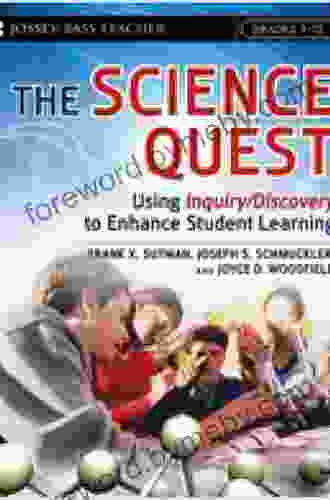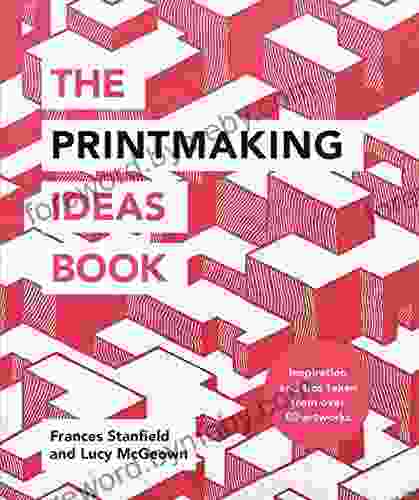Modern Environment for Automation and Data Analysis

In today's rapidly evolving digital landscape, businesses are facing unprecedented challenges and opportunities. To stay competitive and thrive, organizations must embrace modern technologies and methodologies that empower them to automate repetitive tasks, analyze vast amounts of data, and make informed decisions.
4.6 out of 5
| Language | : | English |
| File size | : | 15062 KB |
| Text-to-Speech | : | Enabled |
| Enhanced typesetting | : | Enabled |
| Print length | : | 567 pages |
Automation and data analysis have emerged as critical pillars of modern business operations. By leveraging these capabilities, organizations can streamline processes, reduce costs, improve efficiency, and gain deeper insights into their customers, products, and operations.
Chapter 1: The Power of Automation
Automation is the process of using technology to perform tasks that are typically done manually. By automating these tasks, organizations can free up their employees to focus on more strategic and value-added activities.
There are many different types of automation, including:
- Robotic process automation (RPA): RPA bots can be programmed to perform a wide range of repetitive and rule-based tasks, such as data entry, Free Download processing, and customer service.
- Artificial intelligence (AI): AI-powered systems can learn from data and make decisions, automating complex tasks that would be difficult or impossible for humans to perform.
- Machine learning (ML): ML algorithms can identify patterns and trends in data, enabling organizations to automate data analysis and predictive modeling.
The benefits of automation are numerous. Organizations that implement automation can:
- Reduce costs by eliminating manual labor
- Improve efficiency by speeding up processes
- Increase accuracy by reducing human error
- Enhance compliance by ensuring that tasks are performed according to established rules
Chapter 2: Data Analysis for Competitive Advantage
Data analysis is the process of extracting meaningful insights from data. By analyzing data, organizations can gain a better understanding of their customers, products, and operations, enabling them to make better decisions and stay ahead of the competition.
There are many different types of data analysis, including:
- Descriptive analytics: Descriptive analytics provides a snapshot of what has happened in the past.
- Predictive analytics: Predictive analytics uses historical data to predict future outcomes.
- Prescriptive analytics: Prescriptive analytics recommends actions that organizations can take to achieve desired outcomes.
Data analysis can be used to improve every aspect of business operations, including:
- Customer segmentation and targeting
- Product development and marketing
- Supply chain management
- Risk management
- Financial planning
Chapter 3: The Modern Automation and Data Analysis Toolkit
The modern automation and data analysis toolkit includes a wide range of tools and technologies that can help organizations streamline their processes, analyze their data, and gain valuable insights.
Some of the most popular automation tools include:
- UiPath
- Blue Prism
- Automation Anywhere
- Power Automate
- Google Cloud Workflows
Some of the most popular data analysis tools include:
- Tableau
- Power BI
- Google Data Studio
- Looker
- Qlik Sense
These tools can be used to automate a wide range of tasks, from data extraction and transformation to data visualization and reporting.
Chapter 4: Best Practices for Automation and Data Analysis
To get the most out of automation and data analysis, it is important to follow best practices.
Some of the best practices for automation include:
- Start with a clear goal in mind.
- Identify the right tasks to automate.
- Choose the right automation tool.
- Develop a robust testing plan.
- Monitor and maintain your automated processes.
Some of the best practices for data analysis include:
- Start with a clear question in mind.
- Collect the right data.
- Choose the right data analysis tools.
- Clean and prepare your data.
- Explore and analyze your data.
- Communicate your findings effectively.
Automation and data analysis are essential for businesses that want to stay competitive and thrive in today's digital economy. By embracing these technologies and following best practices, organizations can streamline their processes, gain valuable insights from their data, and make better decisions.
This book has provided a comprehensive overview of the modern environment for automation and data analysis. We have discussed the benefits of automation, the different types of data analysis, the tools
4.6 out of 5
| Language | : | English |
| File size | : | 15062 KB |
| Text-to-Speech | : | Enabled |
| Enhanced typesetting | : | Enabled |
| Print length | : | 567 pages |
Do you want to contribute by writing guest posts on this blog?
Please contact us and send us a resume of previous articles that you have written.
 Book
Book Novel
Novel Page
Page Chapter
Chapter Text
Text Story
Story Genre
Genre Reader
Reader Library
Library Paperback
Paperback E-book
E-book Magazine
Magazine Newspaper
Newspaper Paragraph
Paragraph Sentence
Sentence Bookmark
Bookmark Shelf
Shelf Glossary
Glossary Bibliography
Bibliography Foreword
Foreword Preface
Preface Synopsis
Synopsis Annotation
Annotation Footnote
Footnote Manuscript
Manuscript Scroll
Scroll Codex
Codex Tome
Tome Bestseller
Bestseller Classics
Classics Library card
Library card Narrative
Narrative Biography
Biography Autobiography
Autobiography Memoir
Memoir Reference
Reference Encyclopedia
Encyclopedia F Remy Diederich
F Remy Diederich Flamur Vehapi
Flamur Vehapi Floyd Gottfredson
Floyd Gottfredson Frank Cammuso
Frank Cammuso Florian Dedov
Florian Dedov Yani Alfonso
Yani Alfonso Flora Gregg Iliff
Flora Gregg Iliff Eugenia Viti
Eugenia Viti Karen Deerwester
Karen Deerwester Michael Schiavone
Michael Schiavone Esther Derby
Esther Derby Frederick Amrine
Frederick Amrine Eugene P Northrop
Eugene P Northrop Erik Qualman
Erik Qualman Francois Bissonnette
Francois Bissonnette Eriko Ogihara Schuck
Eriko Ogihara Schuck Florence Weiser
Florence Weiser Una Mccormack
Una Mccormack Frances Stanfield
Frances Stanfield Lamorna Ash
Lamorna Ash
Light bulbAdvertise smarter! Our strategic ad space ensures maximum exposure. Reserve your spot today!

 Allan JamesElevate Student Learning with the Power of Inquiry Discovery: A Comprehensive...
Allan JamesElevate Student Learning with the Power of Inquiry Discovery: A Comprehensive... Jason ReedFollow ·16.3k
Jason ReedFollow ·16.3k Dennis HayesFollow ·15.9k
Dennis HayesFollow ·15.9k Julio CortázarFollow ·15.6k
Julio CortázarFollow ·15.6k Milan KunderaFollow ·14.7k
Milan KunderaFollow ·14.7k Oscar WildeFollow ·4.9k
Oscar WildeFollow ·4.9k Asher BellFollow ·16.1k
Asher BellFollow ·16.1k Ernesto SabatoFollow ·10.2k
Ernesto SabatoFollow ·10.2k Gene SimmonsFollow ·15.8k
Gene SimmonsFollow ·15.8k

 Al Foster
Al FosterDive into the Enchanting World of Manatees: An...
Unveiling the Secrets of the Gentle...

 Isaac Mitchell
Isaac MitchellThe Farm Reggie and Friends: US Version - A Captivating...
A Heartwarming Tale that Embraces...

 Esteban Cox
Esteban CoxThe Interior Design Handbook: Your Comprehensive Guide to...
Are you ready to...

 William Wordsworth
William WordsworthFall Head Over Heels for "Esio Trot" by Roald Dahl: A...
Prepare to be charmed, amused, and utterly...

 Caleb Carter
Caleb CarterBlack Clover Vol Light Frida Ramstedt: A Thrilling...
Prepare to be spellbound by...

 Richard Simmons
Richard SimmonsFantastic Mr. Fox: A Literary Adventure That Captivates...
In the realm...
4.6 out of 5
| Language | : | English |
| File size | : | 15062 KB |
| Text-to-Speech | : | Enabled |
| Enhanced typesetting | : | Enabled |
| Print length | : | 567 pages |









